
Photo: Matt Guymon / Freestone River Photography.
By far the first insects to appear on the scene when spring arrives are the stoneflies. They start moving even before all the snow and ice is gone. Ice fishing anglers can sometimes be visited by small stonefly nymphs, which crawl out of the holes in the ice they are fishing in. Especially if they are fishing near an outlet of a lake or near a flowing water. Because flowing water is the home of stoneflies, they are adapted to living in and near running water.

The nymphs have strong legs that help them crawl around on the bottom and prevent them from being carried away by the current. In addition, they have a wide and flat profile that prevents them from being exposed to the moving water. Nymphs are readily eaten by fish when they get to them, because even though they have evolved to live in strong currents, they occasionally lose their grip and get swept away. This happens particularly often when the nymphs start to move inland and crawl up to hatch into a winged stonefly. This happens in early spring for some species, so it may be a good idea to equip yourself with a few weighted imitations of the nymphs to trick the cold fish to take the fly.
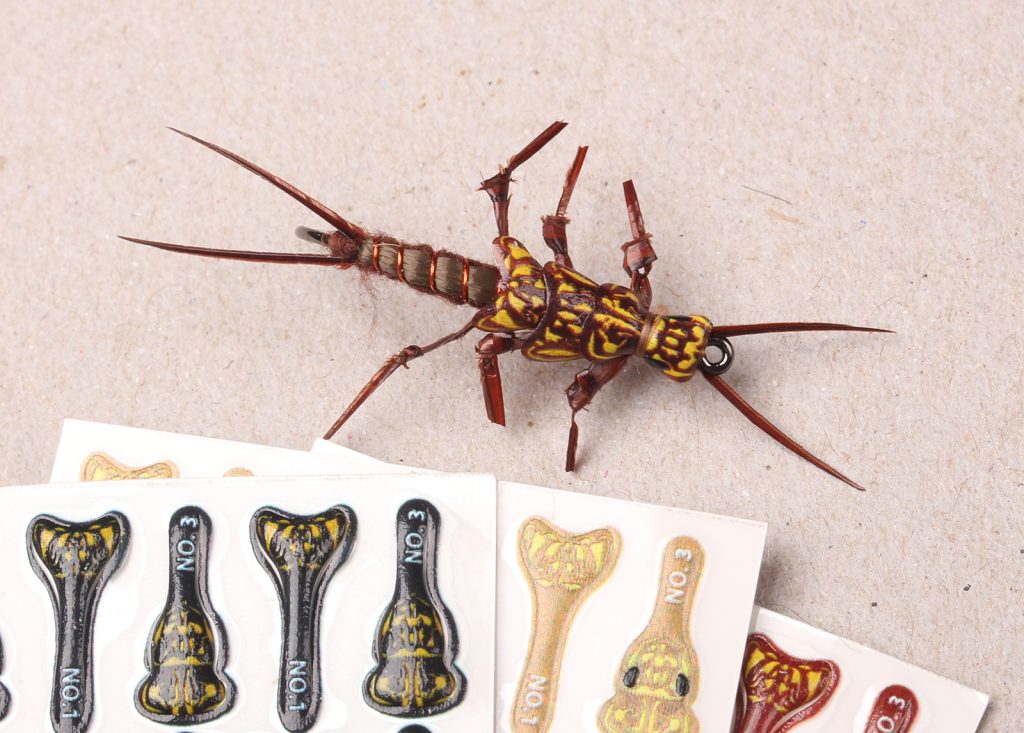
Large heavy nymph is important to bring together with the hatched versions. Here the Stonefly Backs from Pro Sportfisher are used to imitate the nymph version of the stonefly.

Photo: Matt Guymon / Freestone River Photography.
The hatched dragonfly can be recognised by its wings lying flat on its back. They are usually greyish-brown or dark reddish-brown, but some species are yellow or light yellowish-brown. In terms of size, they range from the very smallest, the so-called needle fly, which is only a couple of millimetres long, to giants that are almost 5 cm long. Even the hatched dragonfly is desirable to the fish. As mentioned earlier, the nymph climbs up on a rock or similar at the water’s edge and crawls out of the nymph shell. There they sit with their wings straight up to dry and it happens in some cases that they are pulled out into the current and exposed to the fish. This can be imitated with a high-flying fly with wings standing almost straight up.
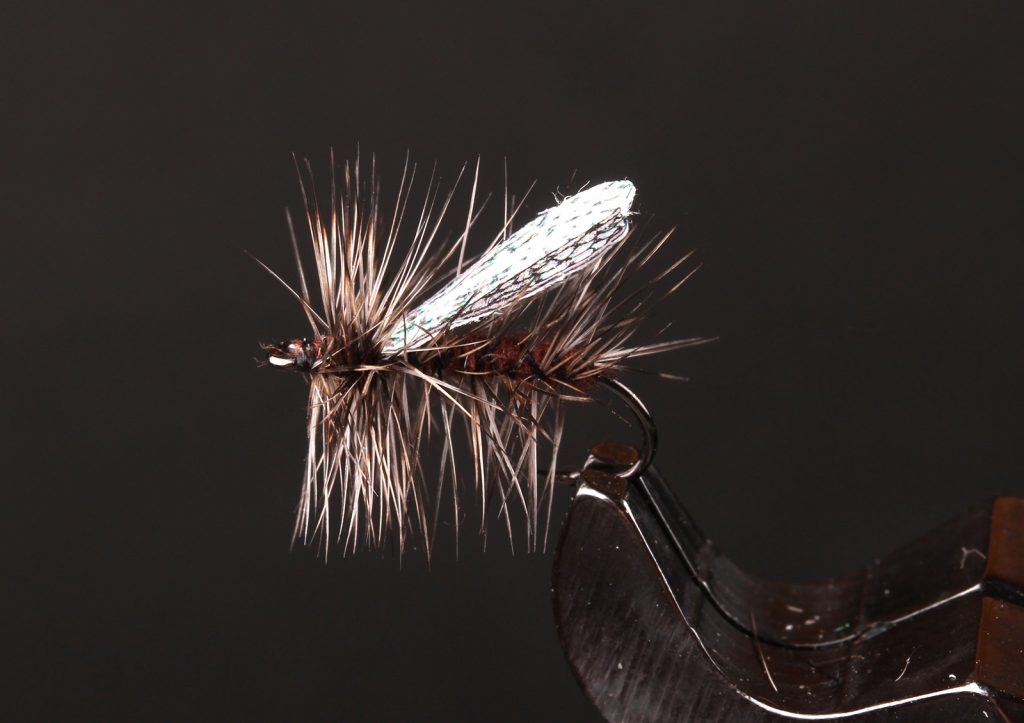
Another time when fish can access the winged dragonfly is when the females are about to go out and lay the fertilised eggs. Some species fly above the water surface and dive down and fly close to the surface to lay their eggs. Some dragonflies land on the surface and become easy prey for the fish. In this case, too, a high-flying imitation is the right medicine.
Of course, the dragonfly may land on the surface in other situations as well, so having an imitation dragonfly with its wings resting on its back can be helpful. Here we describe how to tie a simple but effective imitation of an adult dragonfly.
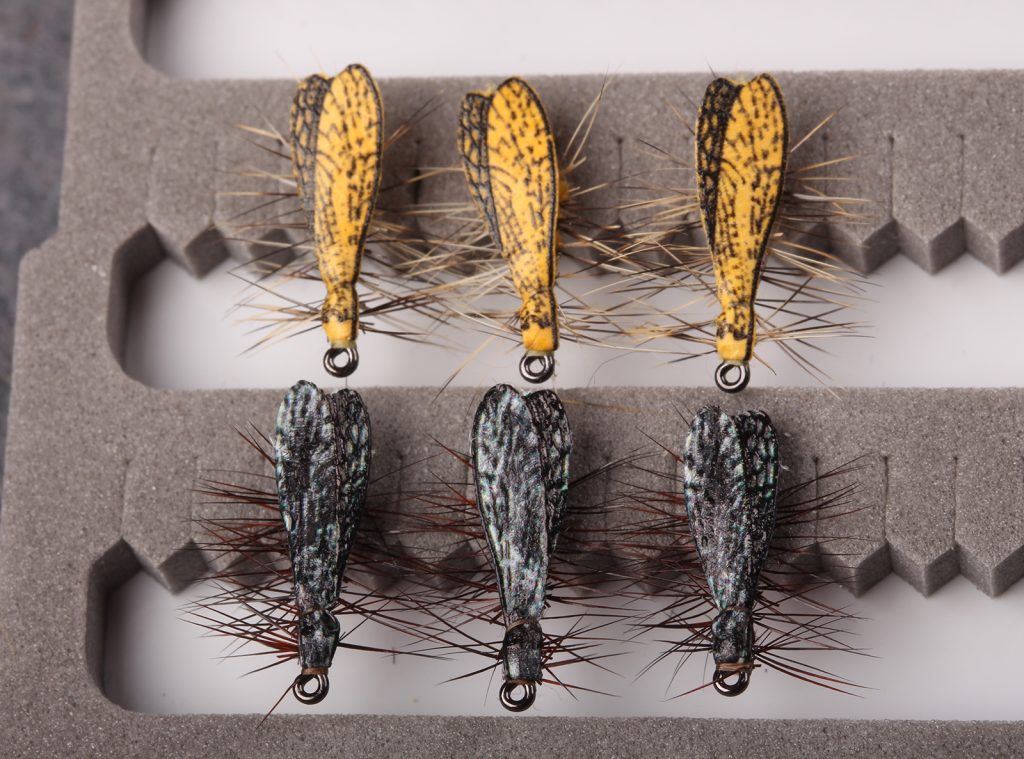
Pro Stonefly
Hook: Ahrex FW530/531 size 14-16
Thread: yellow 8/0
Body: Superfine Amber
Hackle: Whiting Grizzly dyed Pale Yellow
Wing: Pro Sportfisher Adult Stonefly Wing
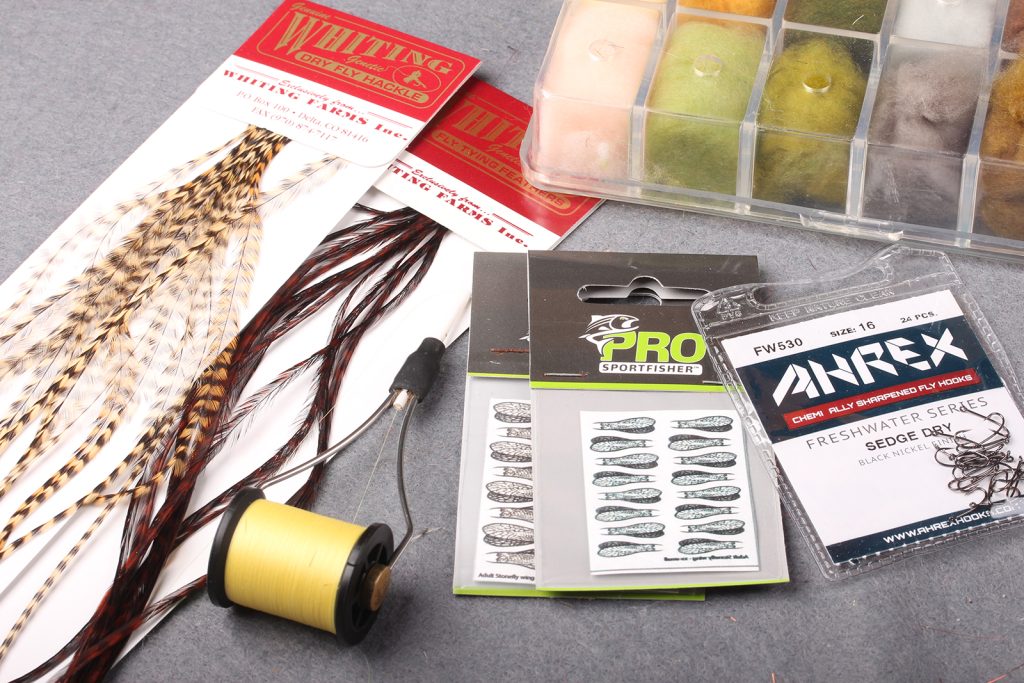
All materials for the fly.

Use a marker pen and colour the wing yellow.
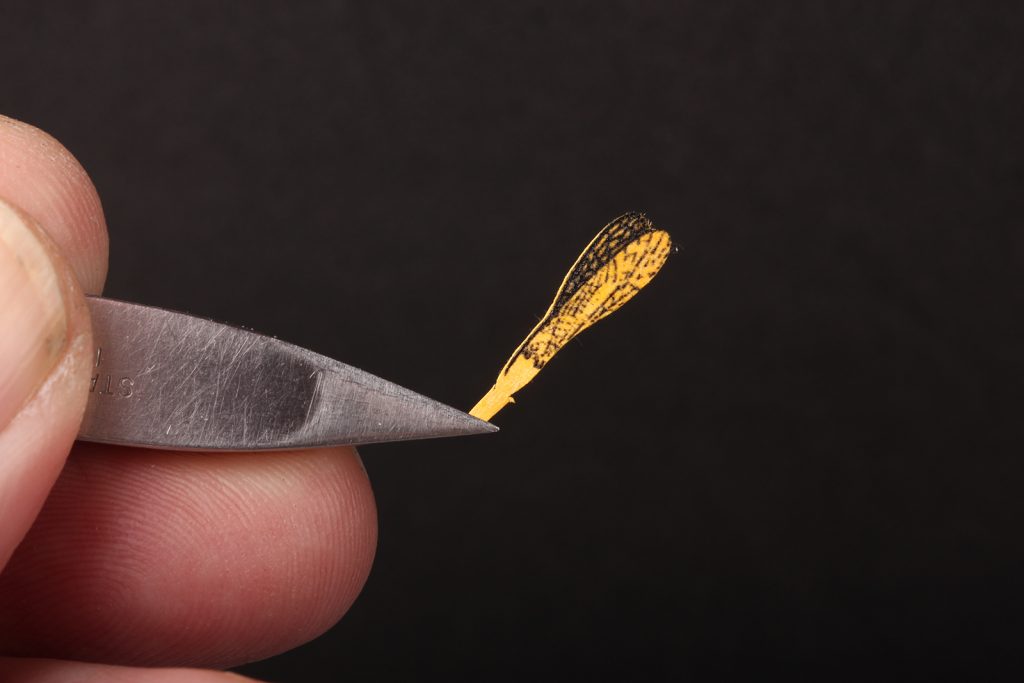
Pull the wing off the sheet and cut out the root end with some extra material as shown.

Attach the thread just behind the eye and attach the wing pointing forwards, face down.
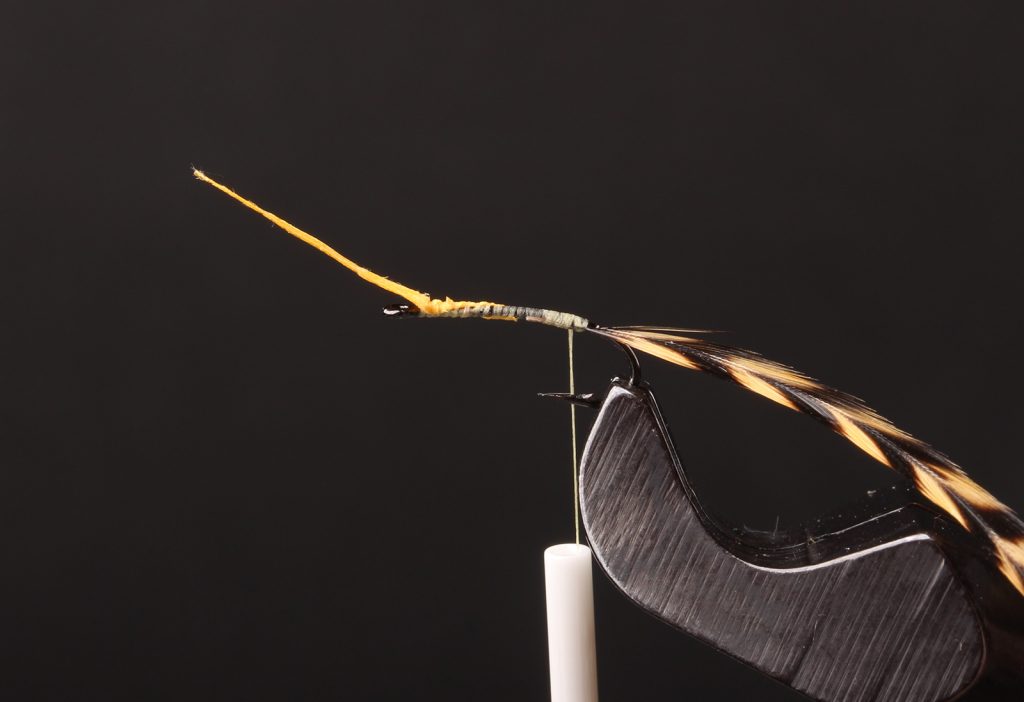
Wrap the thread over the entire hook shank and attach the hackle at the back.

Add dubbing to the thread and wrap a thin, even body right up to the hook eye.
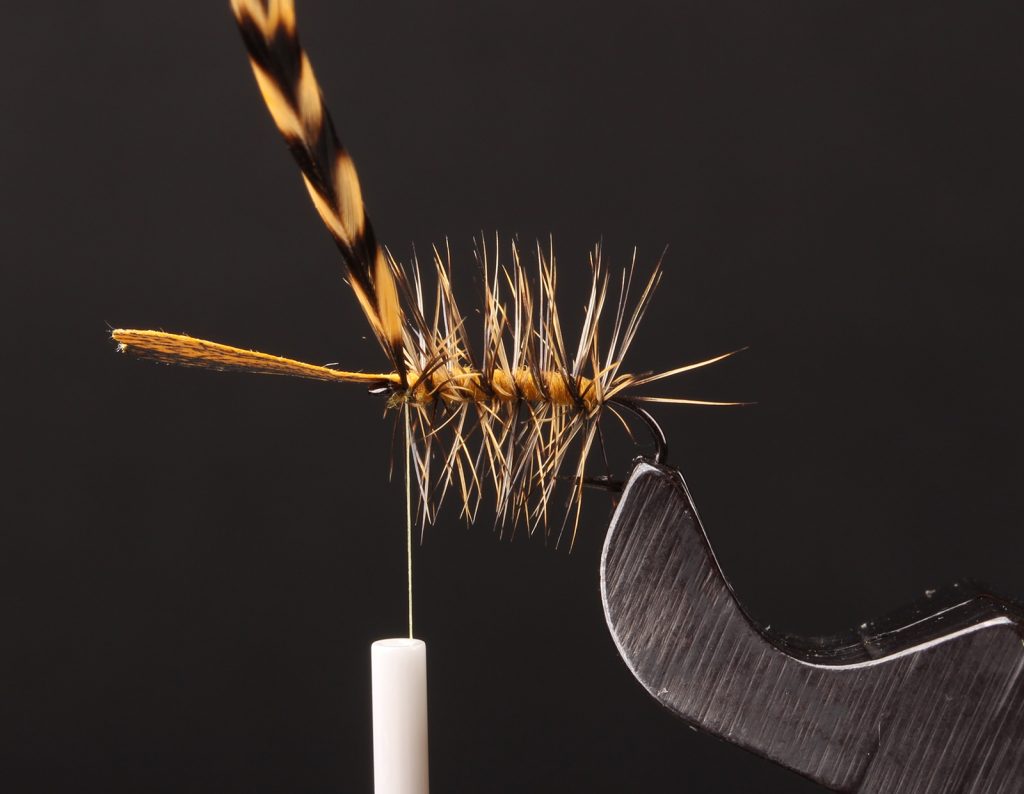
Wrap the hackle over the entire body and fasten at the front. Cut away the excess.

Trim the hackle both above and below the hook shank.

The trimmed result.
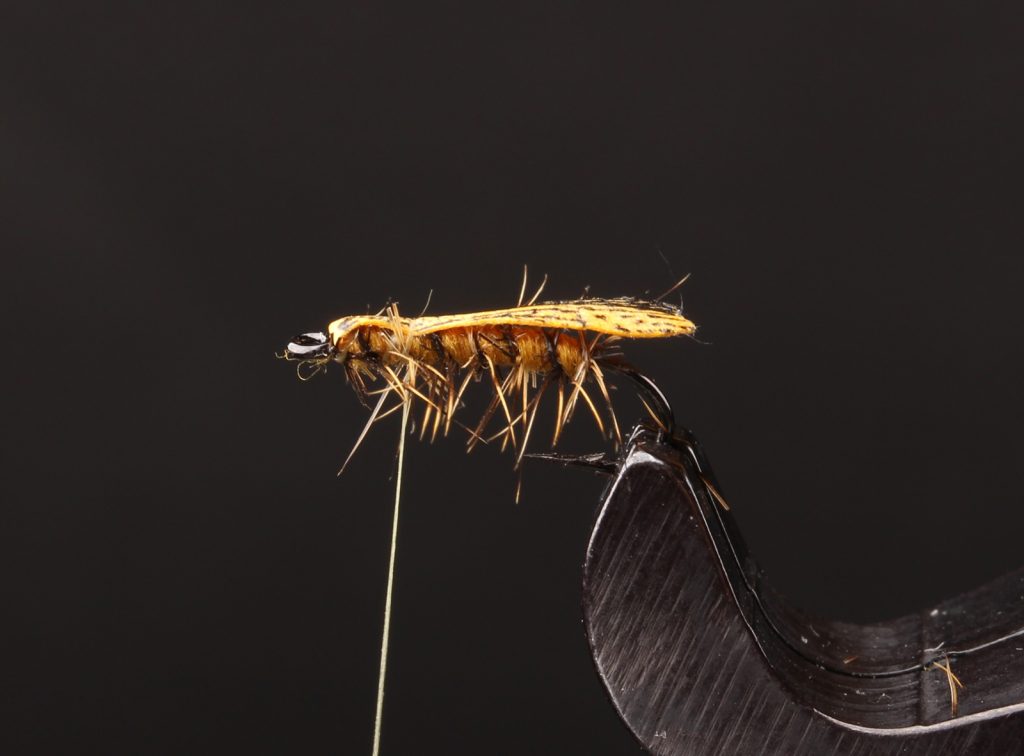
Wrap the thread a couple of mm behind the body and fold the wing back. Fasten the wing with 2 turns and secure the thread to the hook eye and finish with a whip finish.

The finished fly.
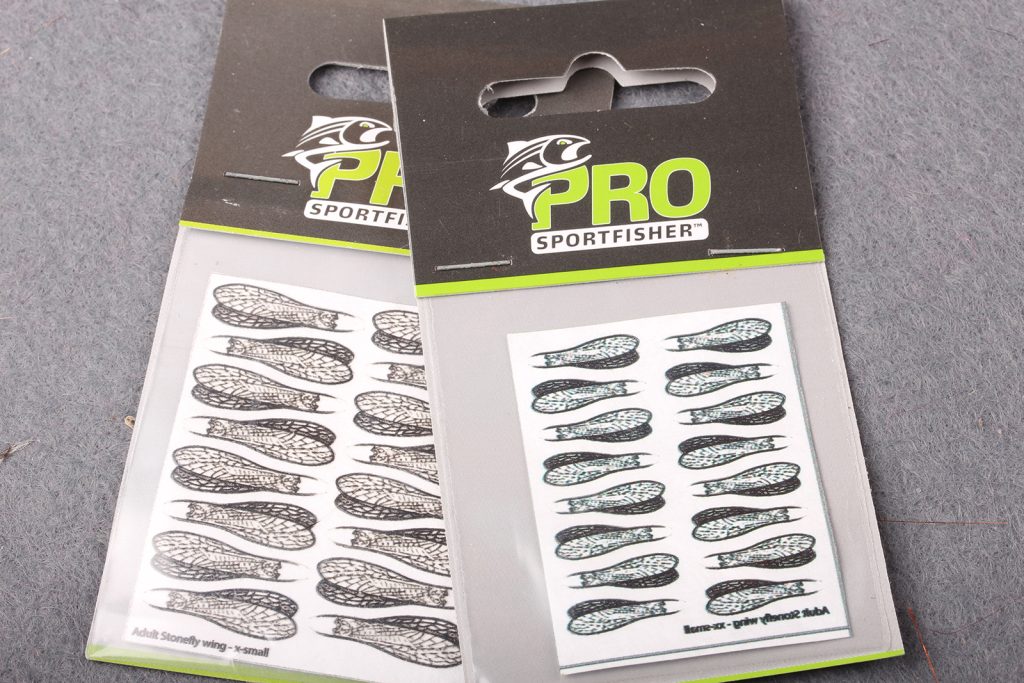
The Adult Stonefly wings from Pro Sportfisher are precut wings and perfect for hatched stonefly imitations.
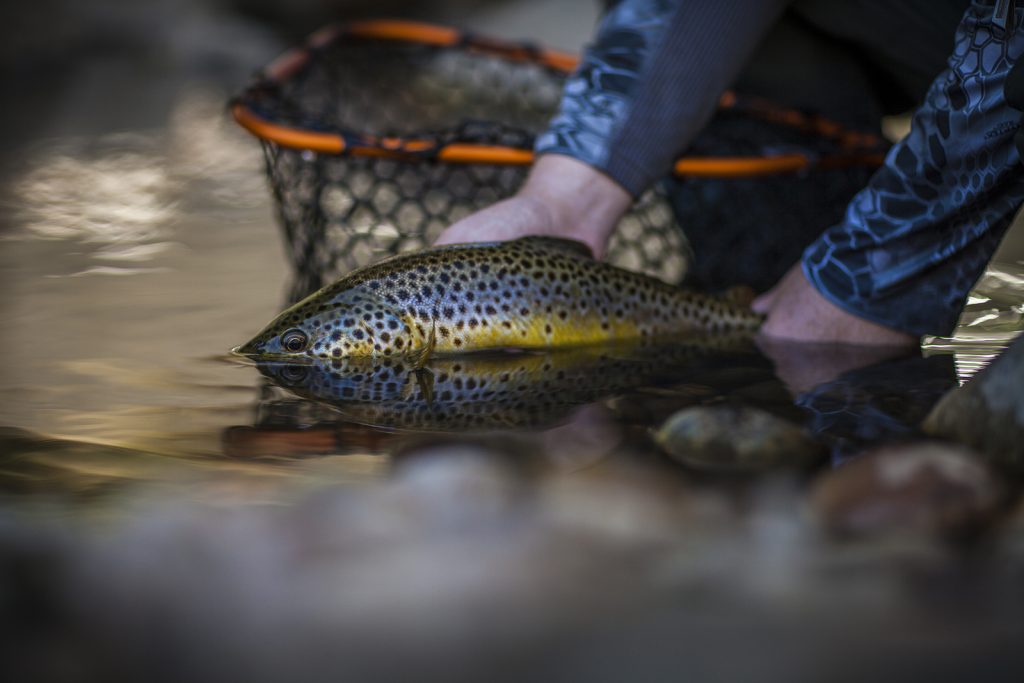
Photo: Matt Guymon / Freestone River Photography.
Tight lines and happy tying, Håkan Karsnäser.
